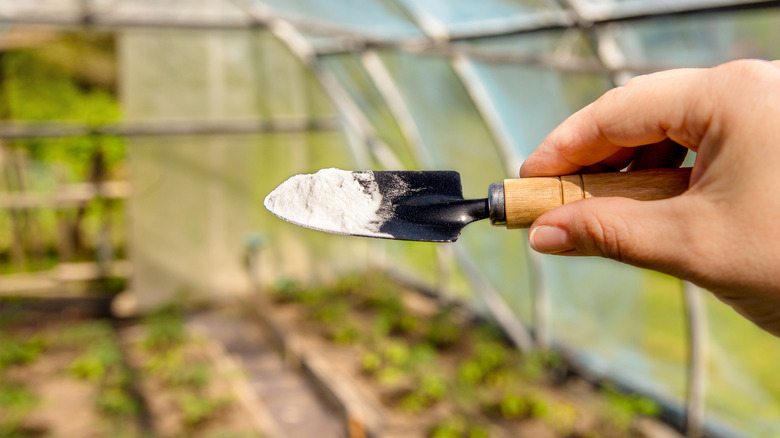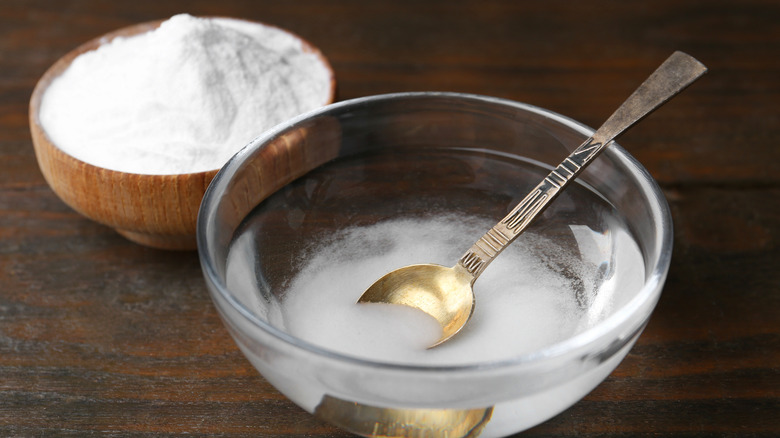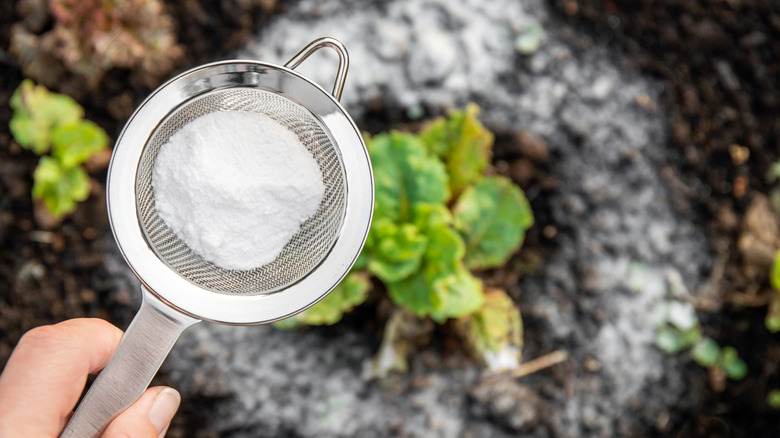Is Using Baking Soda As A Fertilizer Helping Your Plants Or Hurting Them?
Baking soda is often used as a clever cleaning hack that can brighten up your home, but did you know it can help in the garden as well? Using baking soda as a plant fertilizer has gained popularity among home gardeners looking for a cheap, natural solution. While baking soda does not work like traditional fertilizers, it can affect plant health. When used correctly, baking soda can help regulate soil pH, making slightly acidic soils more alkaline. This benefits plants like salvia and geraniums, which work well in neutral to alkaline conditions.
A light baking soda solution, usually one tablespoon per gallon of water mixed with a horticultural oil, applied to the soil can help prevent common plant diseases like powdery mildew and black spot. Unlike organic compost or chemical fertilizers that provide direct nutrients, baking soda works by adjusting growing conditions for certain plants. It is important to remember that baking soda serves more as a soil amendment and not as much as a true fertilizer. Its benefits are dependent on your existing soil and plant type.
When baking soda can give your garden a boost
There are plenty of garden plants that can benefit from a little baking soda, and it works best when used for specific issues. For tomatoes and other vegetables prone to fungal diseases, mixing one tablespoon of baking soda, one gallon of water, and a few drops of mild soap can prevent infection when sprayed weekly. Roses and other ornamentals that can be susceptible to black spot show improved foliage when treated with the same mixture. For plants that love alkaline conditions, like lavender or lilacs, a light dusting will help neutralize acidic rainwater or fertilizer residue leftover in your soil. Seedlings can also benefit from a weak baking soda solution to help prevent damping-off fungus in starter trays.
The best results depend on your goals, though. For a pH adjustment, mix one tablespoon into a gallon of water and apply it to the soil once every few months, evaluating the pH before each application. As a disease preventative, spray the plant leaves until they are just damp, preferably in the early morning so there is plenty of time for them to dry before nightfall. Baking soda can also intensify blooms that change color based on soil acidity. When used in moderation and on appropriate plants, baking soda can become a valuable tool for organic gardeners.
The risks of using baking soda in your garden
Despite all the benefits, there are mistakes you can make when using baking soda in your garden, and it can damage plants when misused. The high sodium content is its greatest risk, as over time sodium can accumulate in the soil, damaging its structure and making it harder for plants to absorb nutrients. This can be troublesome for acid-loving plants like blueberries or azaleas. Even occasional baking soda use can cause the leaves to wilt and stunt their growth. Seed germination rates may also decrease in baking soda-treated soils.
The line between helpful and harmful comes down to how much and how often you use it. Never do more than one tablespoon per gallon of water and always water the plants before applying. Baking soda should not replace a balanced fertilizer and should only be used occasionally for a specific purpose, and not as a regular routine. For most gardeners, relying on compost and organic fertilizer regularly while mixing in baking soda for disease prevention is the safest approach. As with anything new, test a small area of your garden and wait 48 hours before treating the entire bed. Also, consider soil testing if you use baking soda regularly to keep an eye on the overall sodium levels.


